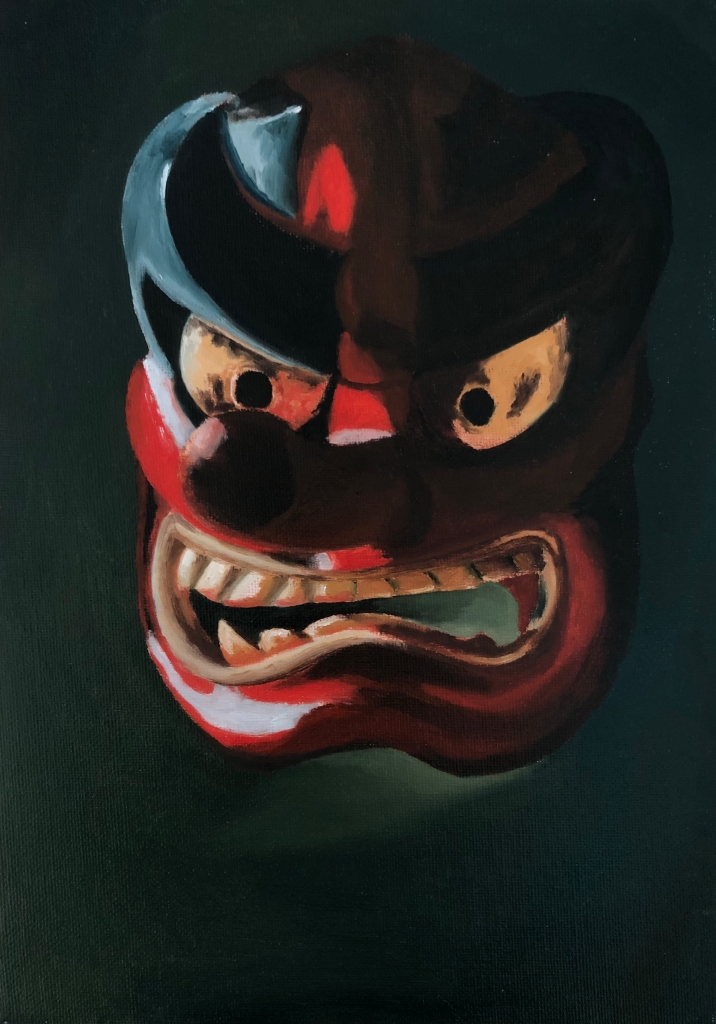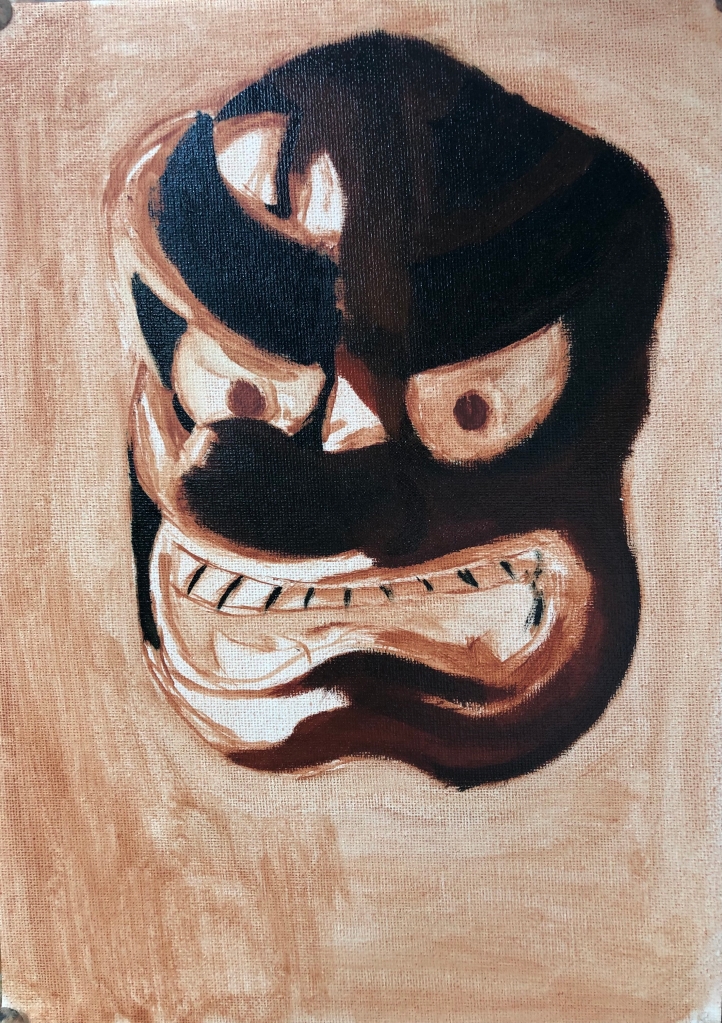“Sometimes they are good, and sometimes bad. Why do you find that so difficult to understand?”
Like so many things that live in the mountains, Tengu tend to the mysterious and misty. You often see masks of them in the dusty vestibules of provincial inns, hanging next to a fifty year old square Seiko clock, where they are expected to deliver luck and prosperity. I am told Tengu also used to entrance Buddhist priests, tie them to the tops of trees, and beguile them into eating dung disguised as food. So there is a mixed CV.
I naively asked a Japanese friend whether Tengu were good or bad. It seems I asked the wrong question. As with all of us, sometimes they are good and sometimes they are bad.
This is a Tengu that hangs near my easel, lit from behind by a fading spring sunset.

A good art instructor told me not to be impatient, and to do an underdrawing in diluted burnt sienna. It works: even though you cannot see the underpainting, it seems to add a depth to the finished image. How does it do this? How should I know?




Yes, the burnt sienna base works well. It is something my father used to start his paintings. The Tengu turned out well.
LikeLiked by 1 person
Thanks Vivienne. I enjoyed your story about your father’s painting of Hutt River, and how it made its way back to you. My paintings also have lots of fingerprints on them – sometimes on the front.
LikeLike
I really don’t know Tengu good or bad but certainly it can make us afraid at night. You have drawn beautifully ☺️🌹. Well shared 👌🌹💐🍫
LikeLiked by 1 person
Thanks Priti. It certainly made me afraid the first time I saw the mask.
LikeLike
Yes i also got afraid. 💖☺️❤️💞🍫💓💕🤗👍Stay happy always 🍫💐❣️🍫
LikeLiked by 1 person
I also got afraid.❣️💕💓❤️❤️☺️😌🌹🌷😊My pleasure. Stay happy always ❤️❤️☺️🎊
LikeLiked by 1 person
Thanks Priti. You too.
LikeLike
I love this piece Phil. And I love the title of the piece. And I’m so happy to see your changed cover image for the website . best, Bonney
LikeLiked by 1 person
Thanks Bonney. The credit for the change to my cover image is all down to you. I must confess it had not occurred to me, and I am grateful you pointed it out. And I am glad you like the replacement image. Best, Phil
LikeLike
Truly love that
LikeLiked by 1 person
Thanks, I am glad you like it.
LikeLiked by 1 person